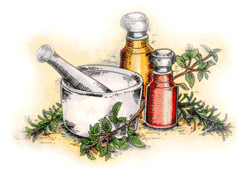 Abdominal Injury Abdominal Injury |
 Achilles Tendon Achilles Tendon |
 Ankle Bone Injury Ankle Bone Injury |
 Ankle Strain Ankle Strain |
 Ankle Synovitis Ankle Synovitis |
 Arm And Shoulder Tenosynovitis Arm And Shoulder Tenosynovitis |
 Arm Contusion, Forearm Arm Contusion, Forearm |
 Arm Contusion, Radial Nerve Arm Contusion, Radial Nerve |
 Arm Contusion, Upper Arm Injury Arm Contusion, Upper Arm Injury |
 Arm Exostosis Arm Exostosis |
 Arm Fracture, Forearm Arm Fracture, Forearm |
 Arm Fracture, Humerus Arm Fracture, Humerus |
 Arm Strain, Biceps Injury Arm Strain, Biceps Injury |
 Arm Strain, Forearm Arm Strain, Forearm |
 Arm Strain, Triceps Arm Strain, Triceps |
 Arm Strain, Upper Arm Arm Strain, Upper Arm |
 Back, Ruptured Disk Injury Back, Ruptured Disk Injury |
 Back Sprain, Lumbo Dorsal Region Injury Back Sprain, Lumbo Dorsal Region Injury |
 Back Sprain, Sacroiliac Region Injury Back Sprain, Sacroiliac Region Injury |
 Back Strain, Dorsal or Thoracic Spine Region Back Strain, Dorsal or Thoracic Spine Region |
 Back Strain, Lumbar Spine Region Back Strain, Lumbar Spine Region |
 Bee Sting Bee Sting |
 Bladder or Urethra Injury Bladder or Urethra Injury |
 Breast Contusion Breast Contusion |
 Breastbone Sprain Breastbone Sprain |
 Burns Burns |
 Buttock Contusion Buttock Contusion |
 Chest Muscle Strain Chest Muscle Strain |
 Collarbone Area Strain, Deltoid Muscle Collarbone Area Strain, Deltoid Muscle |
 Collarbone (Clavicle) Contusion Collarbone (Clavicle) Contusion |
 Collarbone Dislocation - Shoulder Joint Collarbone Dislocation - Shoulder Joint |
 Collarbone Fracture, Outer End Collarbone Fracture, Outer End |
 Collarbone Fracture, Shaft Midportion Collarbone Fracture, Shaft Midportion |
 Corneal Abrasion Corneal Abrasion |
 Dog Bites Dog Bites |
 Ear Injury Ear Injury |
 Elbow Bursitis, Radio-Humeral Elbow Bursitis, Radio-Humeral |
 Elbow Contusion, Ulnar Nerve Elbow Contusion, Ulnar Nerve |
 Elbow Contusion Elbow Contusion |
 Elbow Dislocation Elbow Dislocation |
 Elbow Fracture, Coronoid Process Elbow Fracture, Coronoid Process |
 Elbow Fracture, Epicondyle Elbow Fracture, Epicondyle |
 Elbow Fracture, Lower Humerus Elbow Fracture, Lower Humerus |
 Elbow Fracture, Radius Elbow Fracture, Radius |
 Elbow Fracture, Ulna Elbow Fracture, Ulna |
 Elbow Sprain Elbow Sprain |
 Elbow Strain Elbow Strain |
 Elbow Tendinitis or Epicondylitis Elbow Tendinitis or Epicondylitis |
 Eye Injury Eye Injury |
 Face Contusion Face Contusion |
 Snakebite Snakebite |
 Spider Bites Spider Bites |
 Tick Bites Tick Bites |
|
|
Home :: Elbow Bursitis, Radio-Humeral
Elbow Bursitis, Radio-Humeral
Inflammation of the radio-humeral bursa in the elbow. Bursitis may vary in degree from mild irritation to an abscess formation that causes excruciating pain. In acute bursitis at the elbow, blood from an injury usually causes the inflammation. Bursitis will continue until the blood is removed or reabsorbed. Chronic bursitis results from under treated acute bursitis and usually requires surgery to repair.
BODY PARTS INVOLVED
- Bursa between the radius and humerus (arm bones) where they meet in the elbow. This bursa is a soft sac filled with lubricating fluid that facilitates motion between the radius and humerus.
- Soft tissue surrounding the elbow, including nerves, tendons, ligaments, blood vessels (both large vessels and capillaries), periosteum (the outside lining of bone) and muscles.
Causes
- Direct blow to the elbow or forearm.
- Acute or chronic Infection.
- Arthritis.
- Gout.
- Unknown(frequently).
Signs & Symptoms
- Pain at the elbow.
- Tenderness.
- Swelling.
- Redness (sometimes) over the affected bursa.
- Fever, if infection is present.
- Limited elbow movement.
Treatment
Follow your doctor's instructions. These instructions are supplemental.
- Use frequent ice massage. Fill a large styrofoam cup with water and freeze. Tear a small amount of foam from the top so ice protrudes. Massage firmly over the injured area in a circle about the size of a softball. Do this 15 minutes at a time, 3 or 4 times a day,and before workouts or competition.
- After 72 hours, apply heat instead of ice, if it feels better.Use heat lamps, hot soaks, hot showers,heating pads, or heat liniments and ointments.
- Take whirlpool treatments, if available.
- Use a sling to support the elbow joint, if needed .Don't exercise the elbow with the palm turned up or down.
- Elevate the elbow above the level of the heart to reduce swelling and prevent accumulation of fluid.Use pillows for propping.
- Massage gently and often to provide comfort and decrease swelling.
Home Diet
Eat a well-balanced diet that includes extra protein, such as meat, fish, poultry, cheese, milk and eggs. Increase fiber and fluid intake to prevent constipation that may result from decreased activity. Your doctor may suggest vitamin and mineral supplements to promote healing.
Prevention
- Use protective elbow pads for contact sports.
- Wear warm clothing in cold weather.
- To prevent recurrence, continue to wear extra protection over the elbow until healing is complete.
- Keep pressure off your elbows:- Do not lean on your elbows a lot, such as when working at a desk.
- Follow the R.I.C.E. plan (rest, ice, compression and elevation) whenever you have swelling, warmth or pain in your elbow.
back to injuries section
|
|


